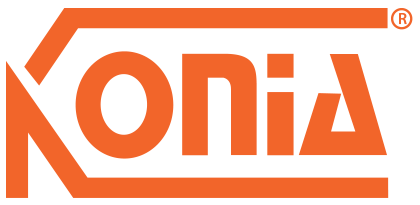Tekla Model Sharing enables efficient global collaborative modeling within one Tekla Structures model. Tekla Model Sharing gives users the freedom to work with the same model at the same time in different locations and time zones.

With Tekla Model Sharing you can work locally and share the model changes globally. For example, one Tekla Model Sharing team of users can work in New York, one in London and one in Bangkok. They all contribute to the same model, working around the globe during their office hours in different time zones while the model keeps building up all the time.
In Tekla Model Sharing each user has a local version of the model on their computer or on a network drive, and the model data is shared and synchronized over the Internet using a Microsoft Azure cloud sharing service. When a model is shared, it is connected to the cloud-based sharing service. You can check the status of the service at any time.
To easily share your model changes, write out them to the sharing service. When you want to update your model with the changes made by other users, read in the changes from the sharing service.
Even though the changes are shared over the Internet, you do not need to be connected to the sharing service all the time. You need to be online only when you want to write out or read in the changes. This enables offline work if your Internet connection is not always available.
Before you can start using Tekla Model Sharing and share your models, the following prerequisites must be met:
-
Internet connection
You must establish a connection to the Tekla Model Sharing service to perform any model sharing actions.
-
TCP port 443 (the default HTTPS) outbound must be open.
If an HTTP proxy is used, it must support HTTP 1.1.
For further information, see TCP ports, URLs and IP ranges used by Tekla Model Sharing.
-
-
All sharing actions require authentication, and the authentication is done with Trimble Identity username and password.
If you do not have a Trimble Identity, go to Tekla Online services and click Log in.
-
Tekla Model Sharing license
All sharing actions require a valid Tekla Model Sharing license. Licenses are tied to users’ Trimble Identities. The organization’s administrator assigns and manages the licenses in the Tekla Online Admin Tool.
-
Tekla Structures
The users of the same shared model must have the same Tekla Structures version, and use the same latest service pack.
The organization’s administrator assigns and manages the subscription licenses in the Tekla Online Admin Tool. To obtain a Tekla Model Sharing license, contact your organization’s administrator.
For details about managing model sharing licenses as an administrator, see Manage Tekla Model Sharing licenses.
The configuration, type, and maintenance status of your Tekla Structures subscription has no effect on your Tekla Model Sharing license.
Tekla Model Sharing licenses can be floating licenses or named single-user licenses. If you have named single-user licenses, each user must have their own Trimble Identity and Tekla Model Sharing subscription license seat.
Floating licenses for Tekla Model Sharing
If you have floating licenses, the same license can be used by different people at different times, but license use is limited to a maximum number of concurrent users. If not enough licenses are available for all users who try to access Tekla Model Sharing at the same time, you might see a message that all license seats are reserved.
A license seat is reserved when a user starts a read in or write out operation in a shared model. Having several shared models open on the same computer only reserves one license seat, but using Tekla Model Sharing on more than one computer reserves a separate license seat on each computer. Users can work on a shared model offline without reserving a license.
Tekla Model Sharing licenses are automatically released when the user shuts down Tekla Structures, changes to working on a model that is not shared, or disconnects from the Tekla Model Sharing service. If a user does not perform any operations that use the Tekla Model Sharing service, such as write out or read in, their session automatically closes after eight hours. We recommend that each user shuts down Tekla Structures at the end of the day to close the session and release the Tekla Model Sharing license without delay.
Floating licenses can be temporarily assigned outside of your organization to any users. If a user is an employee in a different organization and an external license user in your organization, Tekla Model Sharing reserves a license seat in your organization by default. If no licenses are available your organization’s license pool, Tekla Model Sharing reserves a license seat in the user’s own organization.
When you start to share a model using Tekla Model Sharing, the model is connected to the cloud-based sharing service.
- To send model changes to the sharing service, you write out.
- To fetch other users’ model changes from the sharing service, you read in.
When you read in other users’ changes, the updates to your local version of the shared model are delivered to you as incremental packets. This means that when you read in, the data that is fetched from the sharing service is merged with the data on your computer. You must read in all shared changes before you can write out your own changes to the sharing service.
Note that there is no central model in the sharing service as such, only a model instance that consists of a model baseline and incremental updates. You cannot open the model in the sharing service or access any files.
The image below shows how the model data is stored to the sharing service. Each user fetches the model data from the sharing service to their local versions of the model when they read in. User authentication is based on Trimble Identity.



 Tiếng Việt
Tiếng Việt